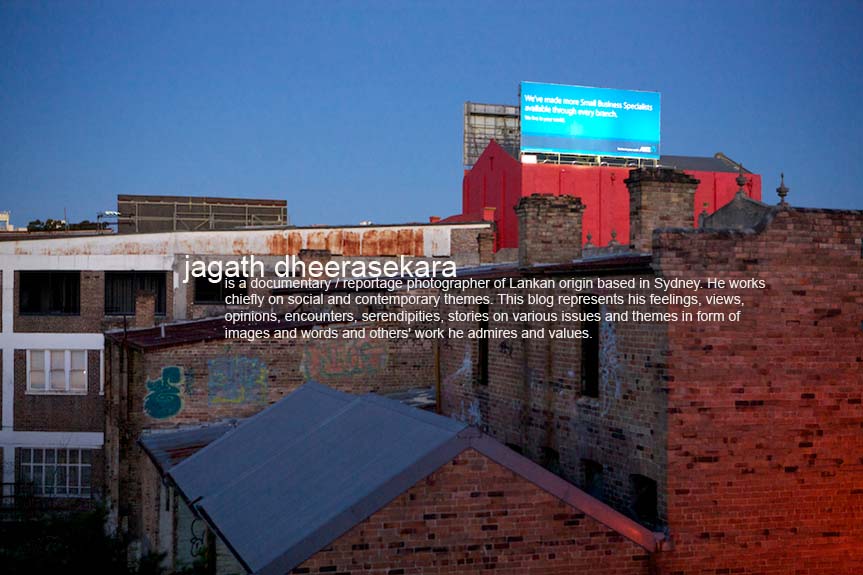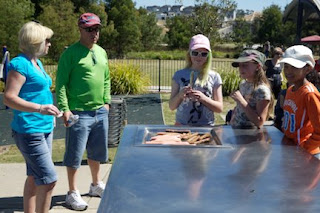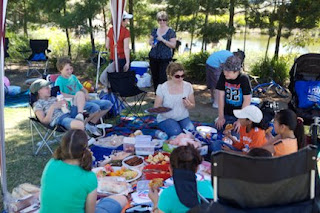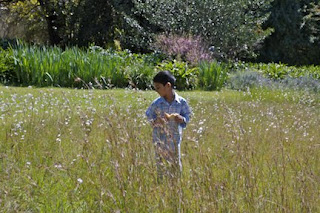We drove down to Ratnapala aiya and akka's place. After a long time I had a chance of spending time with Ratnapala aiyas. In mid 80s his room at the Uni of Ruhuna was a common room for many of us. Food and drinks were galore. He became a closest family friend and through him came to know a lot of good people. Ratnapala aiya never deserted us in bad times as many did and stood behind us like a shadow as Amma always says. I still remember the chat I had with the close family at Boossa in one evening. He too was there. Not much of a difference even today - same old people - except for "a few" grey hairs. Kids had a great time. So had we. The day was full of many things - chats, fun, food, acute nostalgia etc etc etc.
Sunday, September 28, 2008
Saturday, September 27, 2008
Tuesday, September 23, 2008
John and Elizabeth Macarthur. Camden Park and House. Natives. Convicts. 5000 acres. Curiosity













The Camden Park, which is located in the outskirts of Sydney is a significant venue as far as the history of colonized Australia is concerned. John Macarthur was granted 5000 acres of the best pastureland in the crown colony in 1805 as per his petition to the Colonial Secretary Lord Camden to breed sheep. The grant property was then known to the koori tribes, indigenous people as Benhennie (the dry land) and white settlers as Cowpastures. With this grant, Macarthur who had been exiled returned to Australia and set up the Camden Park Estate. He transformed Benhennie into a model English estate over the years. A lady who helped us with information told me that John Macarthur “was given 20 convicts by the crown” and he used these people in setting up his new and ambitious venture. She added that due to the fact that “the natives and convicts were in the vicinity the house had to be fortified with thick walls”. Macarthur, however, she further said, “employed natives though it did not happen overnight”. Construction of Camden Park House was begun in 1831 to complete it in 1835 a year after his death. His sons James and William were in-charge of the construction of the mansion. Architect, John Verge designed the mansion. He borrowed the style of Andrea Palladio, the 16th century Italian architect, which incorporated a central two-storey block with one-storey wings and extensions at each side. As time went by, few alternations and additions have been made due to the fact that to date the mansion remains to be a lived-in house. The House, nonetheless, remains faithful to the original blueprint of John Verge even today. It houses finest collection of books, Victorian furniture and various artifacts. The whole entity gives the visitor a glimpse of lifestyle and psyche of the early wealthy European settlers in colonized Australia. The Camden Park House, which has become one of the most important mansions of Australia, is still occupied by the Macarthur family. The House is believed to be one of the oldest residences in the country still occupied by the descendents of its founder. The Camden Park House was open to the public on the third weekend in September and we made use of it to visit the Park and House last Sunday. I am grateful to the people who permitted me to take a few photographs inside too. There were quite a number of folks helping visitors to peruse the annals of history whilst going through passages and corridors of the mansion. The large garden, which would have had its heyday long years ago, still bears a fine collection of exotic plants which helped European settlers to replicate their land in a faraway continent. Today, the original awarded land has shrunk down to 1000 acres where Belegenny Farm is run. Belgenny Farm which dates back to 1805 was the home farm of John and Elizabath Macarthur. I am so curious to know more about the people who laboured in setting up Macarthur’s venture also - natives who were living in the area and convicts – their descendants – where they have gone etc etc etc. My curiosity would drive me to photopraphically explore all as time permits.
Monday, September 22, 2008
Sunday, September 21, 2008
Thursday, September 4, 2008
Subscribe to:
Posts (Atom)






















